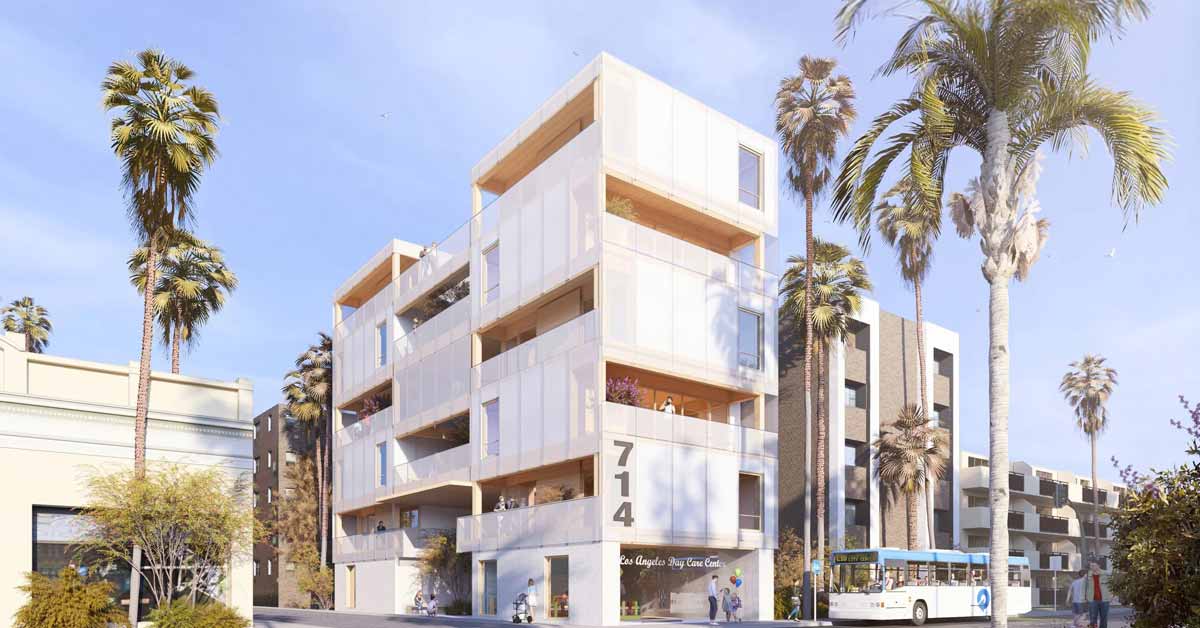As homelessness rises, the amount of affordable housing stagnates, and climate disasters increasingly leave people displaced, the clock is ticking for cities across the United States to innovate their approach to housing.
The city of Los Angeles recently decided to turn to a larger pool of experts in its first-ever “Small Lots, Big Impacts” design competition. The objective was for architects, designers, and students to design multi-family housing concepts for vacant lots across the city.
With 356 entries from over 36 countries, the organizers of the competition — the City of Los Angeles, University of California Los Angeles’ research center City Lab, and nonprofit LA4LA — hoped to garner some fresh solutions, especially after fires earlier this year worsened the city’s housing crisis.
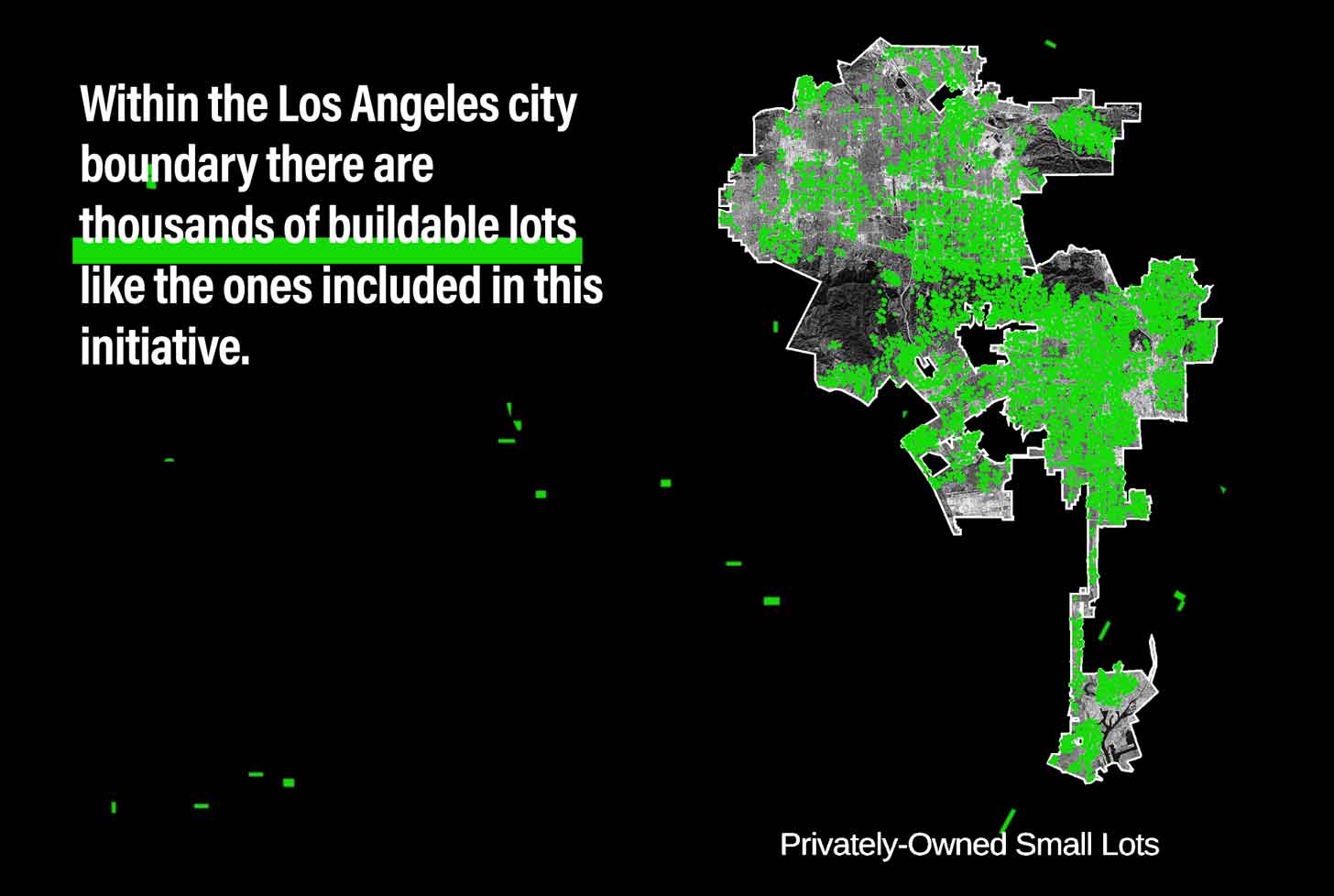
“Los Angeles has a rich history of housing innovation and of pioneering new housing models, but in recent years we have struggled to find a way forward,” a webpage for the contest explains. “This competition lays out a distinctly L.A. way of making homeownership more attainable from Angelenos across the city.”
The winning designs will act as blueprints for developers to build on small lots, Dana Cuff recently told The New York Times. Cuff is a professor at UCLA, the director of the university’s City Lab, and one of the organizers of the contest.
Designers were asked to develop their projects with the intent to build on roughly 4,000 “underutilized parcels of less than a quarter acre” across the city. The plan, she said, is to break ground on the winning concepts by next summer.
“We need to see what’s possible for L.A.’s near future,” Cuff said in a press release for UCLA.
“By bringing together the best architects, developers and builders, we can invent a new generation of ‘SoCal starter homes’ — compact, sharing land once occupied by a single house (and) giving dignity and joy to their residents while respecting Mother Nature.”
Of the myriad of submissions into the contest, a handful were selected as “winners.” The jury chose both student and professional applicant winners, awarding cash prizes to student submissions, with professional winners receiving the opportunity to further develop their ideas in place of a monetary prize.
On the contest website, all submissions are catalogued to “honor the work we received and to ensure that the public can be inspired by the myriad of great ideas about building housing on small lots.”
The types of lots were split into different categories for the competition: Gentle Density and Shared Future.
In the Gentle Density category, the projects utilize “infill sites” to create housing density. Essentially, these homes would be built on vacant or underutilized land within existing urban areas, filling in the gaps between buildings.
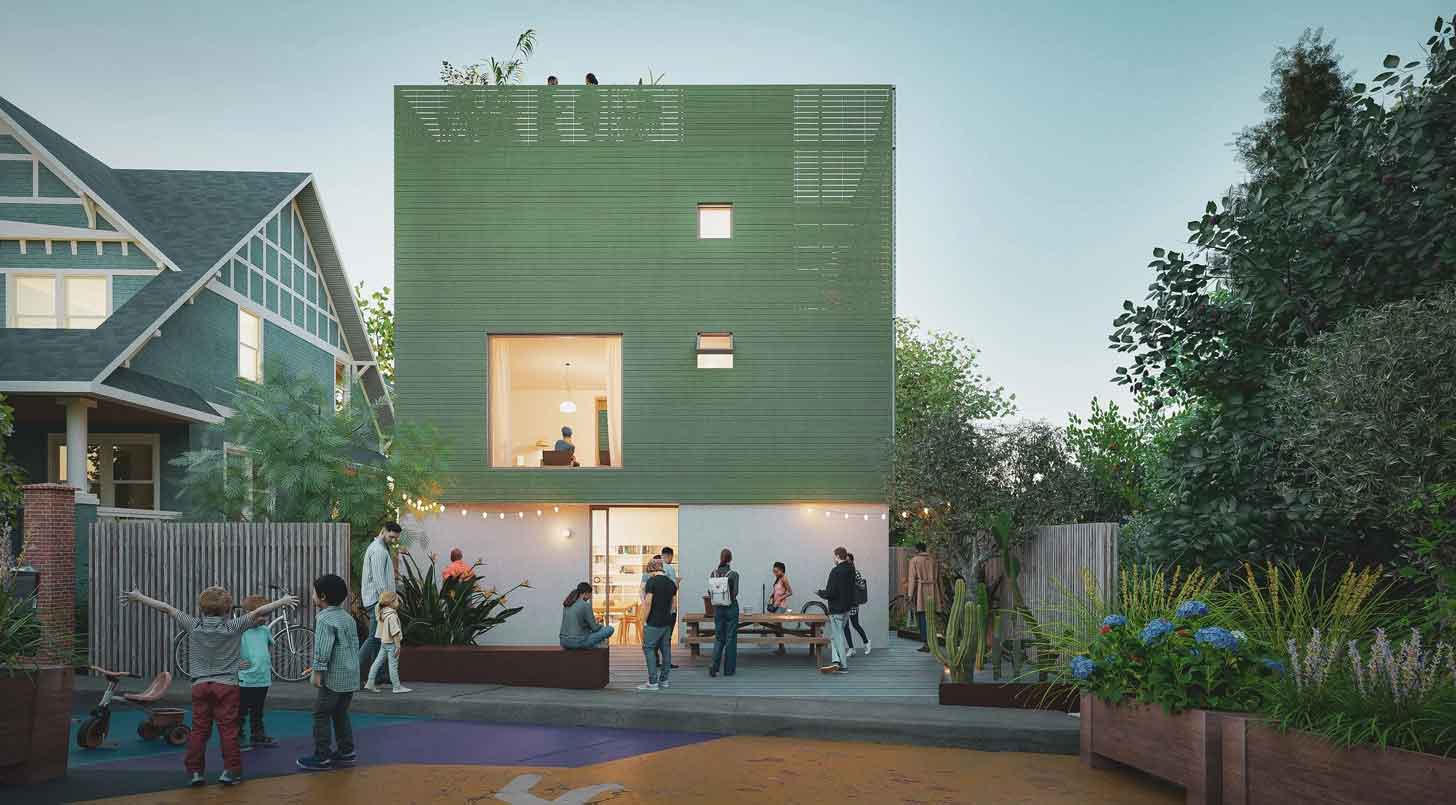
One award-winning project in this category is Shared Steps, by firms WORD and SSK, based in Berkeley and Los Angeles, respectively.
Shared Steps is created with a modular design, with a series of three separate “stepped” buildings that initially appear as one residential unit but actually contains three 3-story buildings, as well as three accessory dwelling units.
“Unlike typical duplexes or townhouses, the project’s unique architecture and thoughtful unit mix lend themselves to innovative ownership structures,” the designers say in a statement.
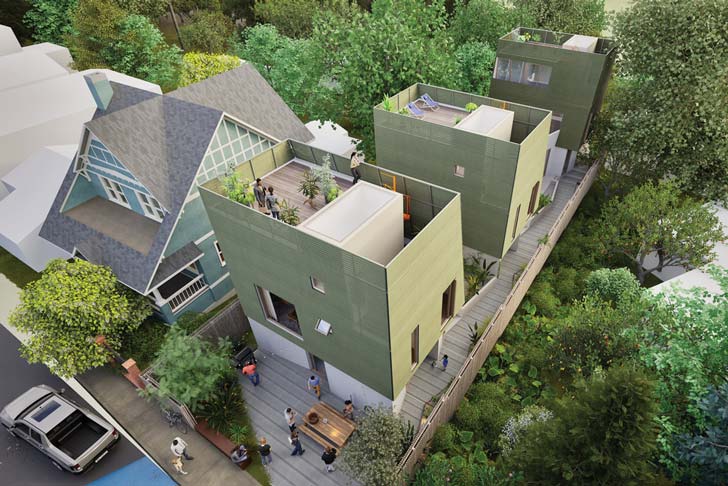
The designers envision that 25% of the units would be reserved for community housing providers, while the other ADUs and flexible units could be single-family housing or commercial spaces.
“The stepped, modular design creates distinctive living spaces. Designed to be easily split, the units are well suited to community land trusts and tenancy- in-common arrangements,” the designers added.
Another winning design in the Gentle Density category is the Accordian House, by firm SNDBOX, based in Kelowna, Canada. Designers here built around a “misfit” parcel of land, dividing a small, irregular lot into two separate pieces. Each section includes a primary unit, a junior accessory dwelling unit, and a detached dwelling unit.
The units step up or down on the terrain of the lot, thus giving the “accordian” name its meaning.
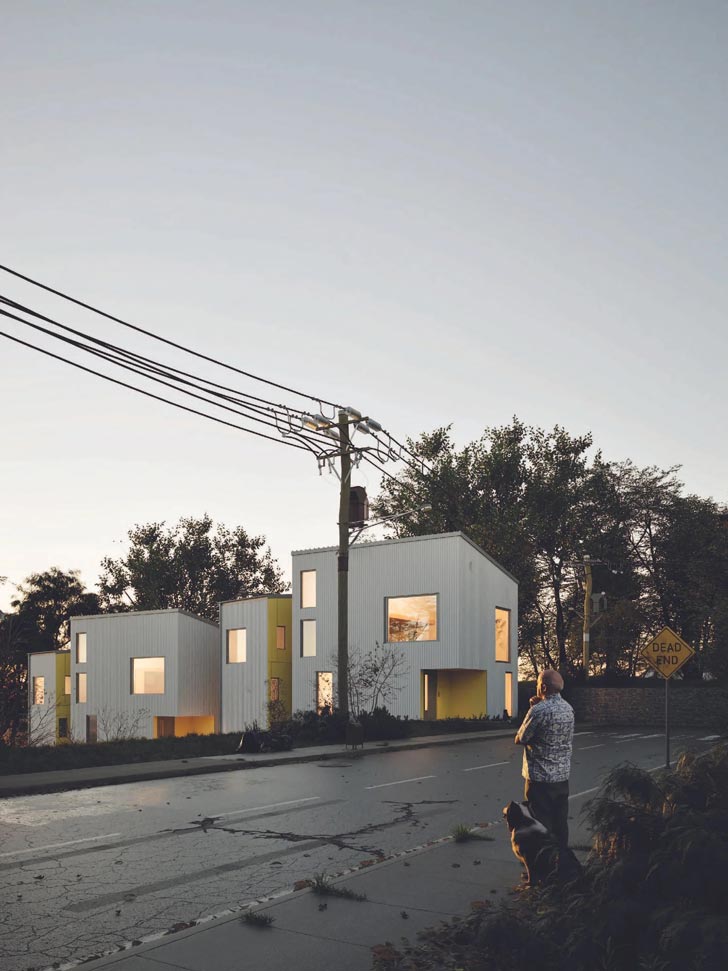
Additionally, the designers factored in enhanced fire protection, with each unit fully sprinklered, fire-rated construction, and non-combustible siding that meets or exceeds building code requirements.
“This strategy allows the buildings to be placed closer together than typical detached units,” the designers explain, “making the most of tight setbacks and height limitations without compromising life safety.”
The other competition category, Shared Future, focused on apartment or condo-style designs that would be ideal to build in narrow sites on Los Angeles boulevards.
One winner in this category, Common Grounds, by firm Austin Sandy Architects in Alamo, California, utilizes mass timber columns. The columns are spaced on a 30-by-15-foot grid, which can accommodate modular one- and two-bedroom units configured at a variety of sites, scales, and densities.

Mass timber is a lower-carbon building material and is also inherently fire-resistant. Additionally, all other components of the central core of the building, including wall panels, floors, and roofing, are designed around a prefabricated system for rapid on-site building, reducing labor costs and shortening timelines to get housing built even faster.
“The consistent grid provides both structural clarity and design flexibility, without sacrificing architectural quality,” the designers write. “Built for change, the system is both resilient and adaptable.”
One other selection in this category is Terrace Ways, designed by Jonah Coe-Scharff and Kaitlin Faherty from Boston and N.Y.C., respectively.
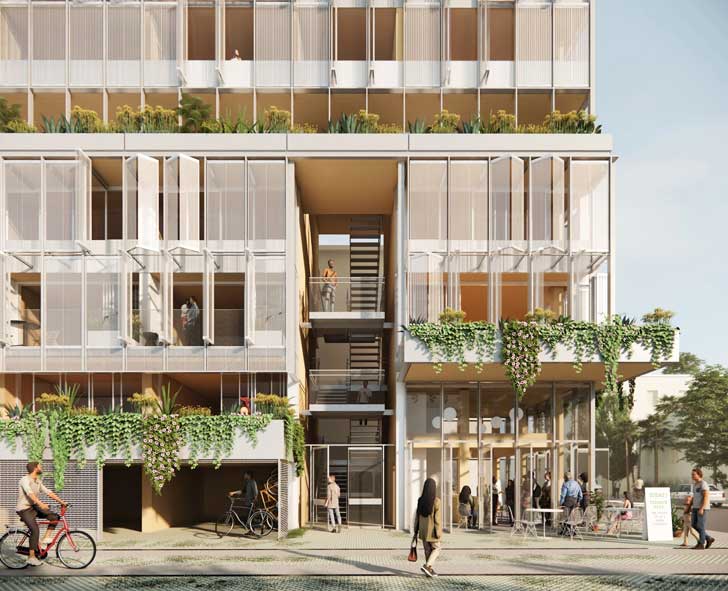
Terrace Ways uses an existing alleyway to create an extension of a building that “brings some elements of traditional single-family homes skyward.”
Essentially, on the first floor of the building, flats offer accessible homes with large balconies. Above these are duplex “maisonettes” that act as a starter home option.
Building upwards, on floors four through six, the building expands into “double decker” two-story homes, with flexible ADUs beneath them. This makes them ideal for multigenerational families, home businesses, or nontraditional financing.
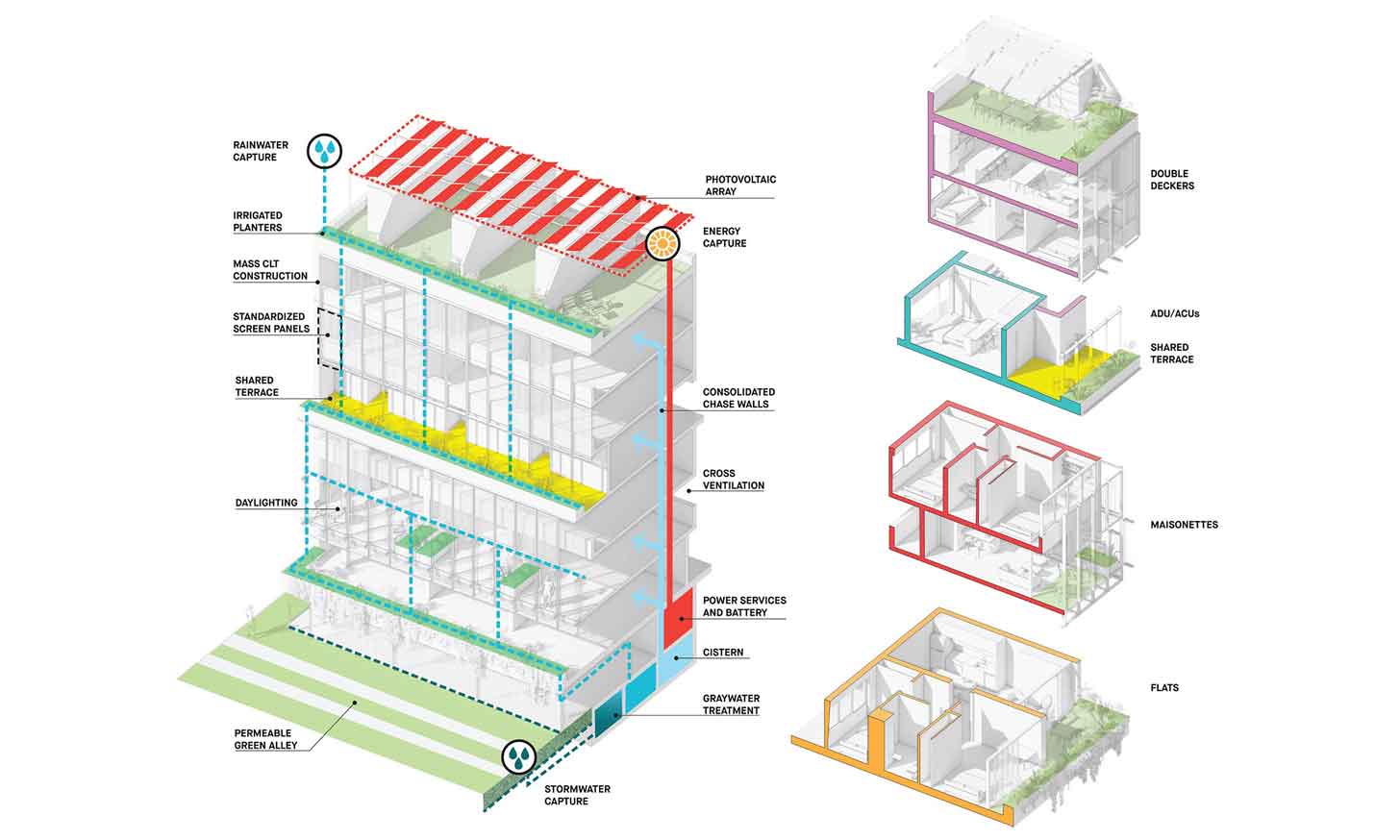
Amid all of these designs are climate-conscious shared spaces, like a shared terrace, lawns, community project room, and green roofs that include stormwater capture, solar collectors, and composting.
“Terrace Ways are the future of dense climate-conscious living. Retooling the amenities of the single-family house, diverse unit types reflect the diversity of LA’s would-be homeowners,” the designers say.
“Organized as repeatable 15-foot bays between front and rear ‘bookends,’ Terrace Ways can adapt to narrow lots of varying lengths.”
While these are just four examples of the hundreds of project proposals in the contest, they represent the wealth of possibilities that exist when the best in the business join together with a shared mission.
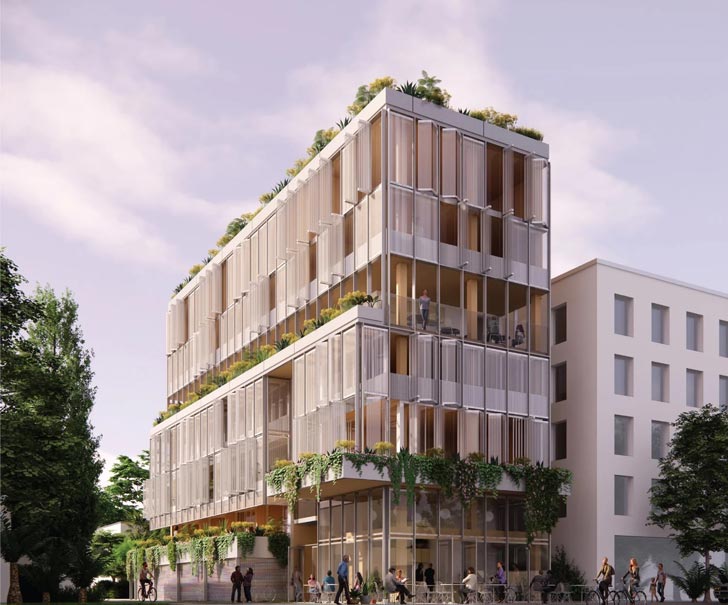
“The winning architects and designers are showing us what multifamily, attainable homeownership looks like on small lots in contemporary, post-fire Los Angeles,” Cuff said in a statement when winners were announced.
L.A. mayor Karen Bass chimed in, as well.
“The City’s architectural community heard and responded to my call, as they came together to produce exciting, high-quality, and feasible design ideas for new first-time homes in Los Angeles,” Bass said.
“I’m deeply proud of the design ingenuity we have right here at home in Los Angeles.”
See all of the winning designs from the “Small Lots, Big Impacts” competition now.
Header image courtesy of Austin Sandy Architects
